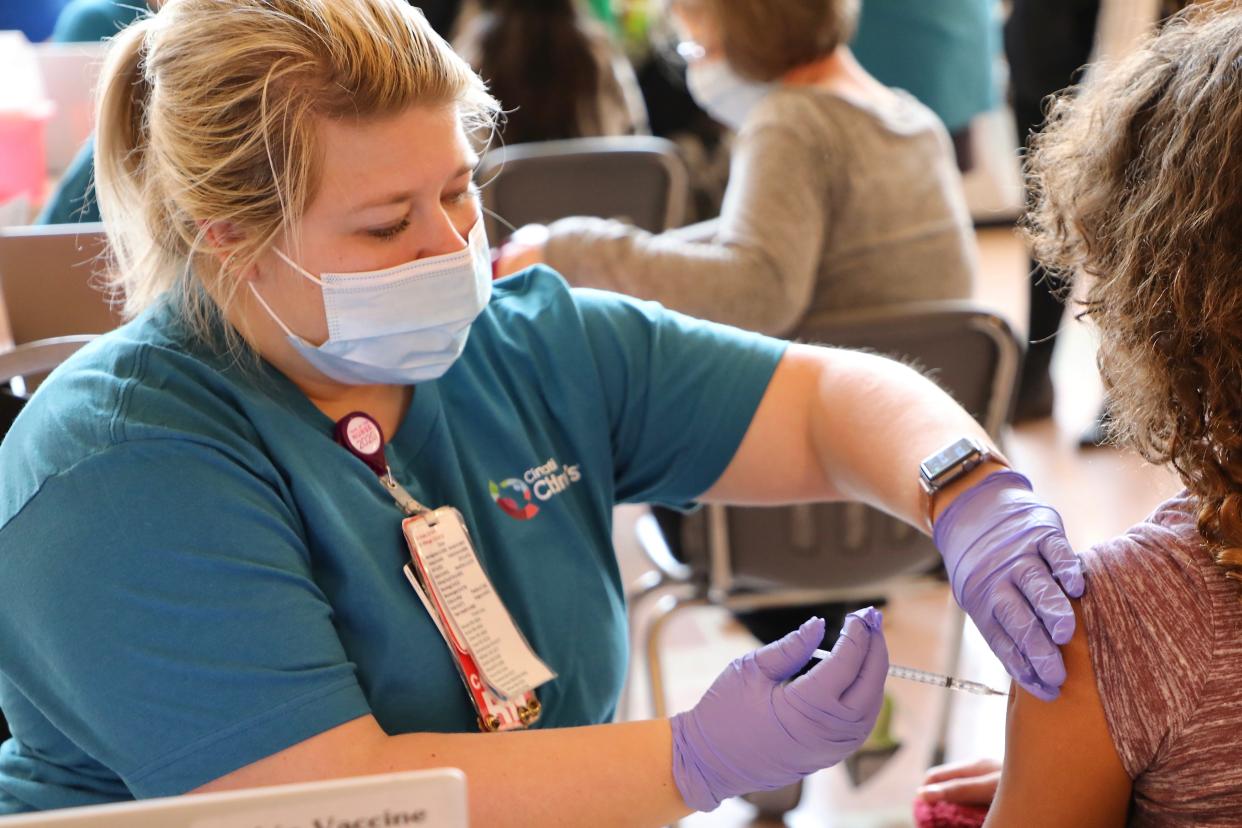At start of pandemic, kids' routine immunizations lagged. Why are they still down?

A lot of children's routine immunizations were interrupted in 2020 by the COVID-19 pandemic, but a newer drop in vaccines doesn't seem to be about pandemic conditions.
More likely, it's about parents' uncertainty, Cincinnati area health leaders say.
"Initially with the shutdown and early pandemic, people stopped coming in. There was just a lot of medical care that stopped," said Dr. Mary Carol Burkhardt, associate division director for primary care at Cincinnati Children’s Hospital Medical Center. "I think a lot of parents now, they’re more often vaccine-hesitant since COVID-19."
A Cincinnati collaborative of child-care providers that tracks immunizations saw some ups and downs in rates of fully vaccinated children over the past few years, said Dr. Denise Saker, the Cincinnati Health Department's interim medical director.
Vaccine Resources website: Cincinnati Children's launches website for parents, doctors
UC Health Hoxworth pediatric clinic, Cincinnati Children’s Hospital Medical Center and the city health department followed their immunizations of children ages 1 month to 27 months old, with the most recent rate dropping 7 points in about a year's time.
Here's how the rates have changed in recent years:
2019 – 32% fully vaccinated.
Mid-2020 to mid-2021 – 37% fully vaccinated.
Mid-2021 to July 2022 – 30% fully vaccinated.
Saker, like Burkhardt, said the latest drop appears to be due to hesitant parents.
The solution? Parents need to have access to "reliable, accurate information without judgment on their decision," Saker said.
Cincinnati providers worked to boost vaccines
One way Cincinnati Children's has tried to provide judgment-free information is through its online Vaccine Resources center. The website gives information about types of vaccines that are routine for children, answers frequently asked questions and offers several other sections, including one about concerns such as myths and truths about vaccinations.
Burkhardt noted that, anecdotally, she is seeing the pediatricians at Cincinnati Children's doing a good job with catching up on kids' immunizations.
"We’re doing outreach, calling, texting, MyChart-messaging. It’s been a challenge," Burkhardt said. The biggest part of that challenge, she said, is the vaccine hesitancy that has evolved since COVID-19 vaccines came on the scene in 2021.
Missing even one routine vaccine can disrupt a child's immunization schedule, she said. "When their schedule is disrupted, it kind of staggers things."
That's because some vaccines come in a series of two or three shots, and pacing them is important to ensure they are fully effective. If one is missed, the next will be late and so on, Burkhardt said.
Cincinnati Health anticipated the initial drop in immunizations because of the 2020 shutdowns and periodic high community spread of COVID-19. To address that lapse, Saker said, the department brainstormed new ways to advise families of office hours, their children's immunization schedules and more.
The big win? Texting families.
"We have access to collect cell phone numbers of families," Saker explained. "We developed text-messaging campaigns." The pipeline to parents was efficient (taking far less time than sending postcards in the mail) and effective: Immunizations went up, evidenced by the increase from mid-2020 to mid-2021.
The texts continue even as the immunizations have dropped, she said, but health officials are again discussing ways to reach parents on a systemwide level and, Saker said, "how to respond to hesitancy at the individual level."
Vaccine drop seen in Ohio, Kentucky, nation
It's not just Cincinnati that's experiencing lower vaccine rates.
The dip in immunizations has happened across Ohio and Kentucky, data from the Centers for Disease Control and Prevention shows.
The federal public health agency estimates the number of kindergarten children who've received their routine vaccines. The 2020 to 2021 school year saw consistent drops in the percentage of kids who got five different immunizations (hepatitis B; DTP, Dtap, or DT; MMR; polio; and varicella) nationally and in Kentucky and Ohio. Vaccine coverage declined by an average of 1.3% for the five immunizations nationally and dipped by an average of 2.6% in Ohio and 4.2% in Kentucky during the 2020 to 2021 school year.
Public health urges parents to immunize their kids
In Hamilton County, Clermont County, Northern Kentucky and Cincinnati, public health providers are urging families to get their kids vaccinated.
"Northern Kentucky Health Department is strongly encouraging our clients, and those of other local providers, to make appointments to catch up on their families' vaccinations," said Steve Divine, interim district health director of the department.
“Routine childhood immunizations are essential," said Clermont County Public Health Commissioner Juliane Nesbit. "Diseases like polio, rubella, measles and whooping cough are rare today because of the success of these vaccines."
Like the Cincinnati providers, Nesbit said parents should feel free to ask any question about vaccines, their safety and how they work.
"It's OK," Nesbit said. "We encourage parents to talk with their medical provider.”
Saker said the city's health clinics are ready to answer parents' questions, judgment-free.
"Our team is still there," she said. "The people you knew – we’re still here."
Parents are encouraged to check their county or city public health websites or schools for immunization clinics and appointments or to schedule appointments with their children's pediatricians.
This article originally appeared on Cincinnati Enquirer: Why are kids still behind getting routine immunizations?

